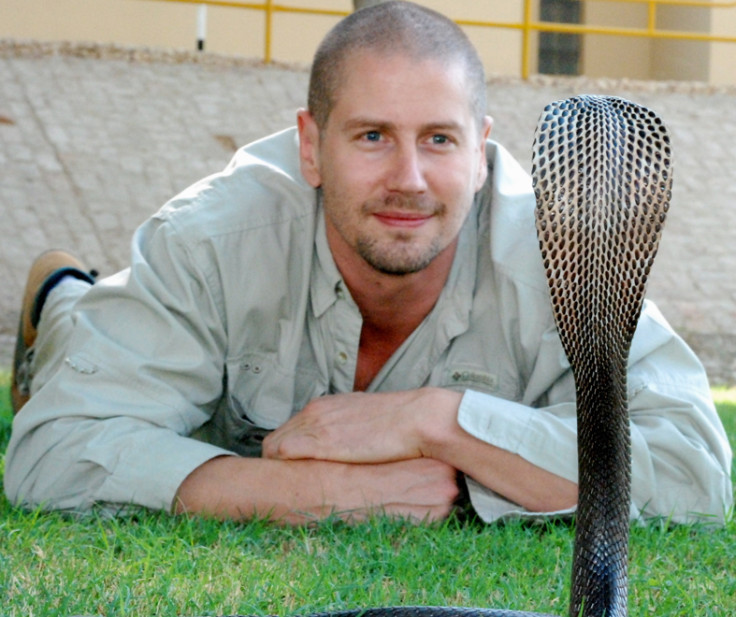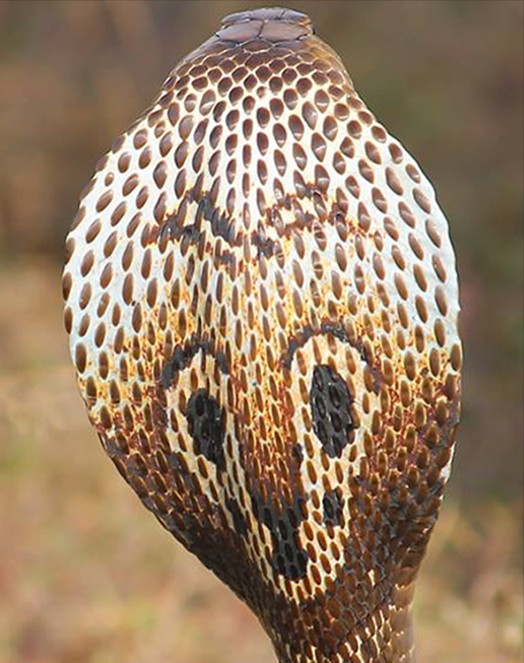How did cobras evolve flesh-eating venom, and could it be used to treat cancer?
Cobra venom can destroy whole limbs. Now scientists want to turn it against cancer cells.
The cobra's iconic broad hood was this group of snakes' original strategy to ward off potential predators by making them look large and fierce, an evolutionary study has found. Flesh-eating venom evolved as a 'plan B' to cripple predators who weren't deterred by the hood.
The wide-ranging study, published in the journal Toxins, investigated 29 species of cobra and closely related snakes in Africa and Asia has traced the evolution of the cobra's trio of deterrents: the hood, the flesh-eating venom and the brightly coloured warning markings on the body.
The established wisdom among snake researchers was that brightly coloured markings and the intensity of the venom evolved together first of all, and the hood came later. The new evolutionary analysis overturns this, finding that the hood was the first defence cobras evolved, closely followed by flesh-eating venom that would severely injure but not kill predators.
"A defining characteristic of venoms used to predators is pain," study author Bryan Fry of the University of Queensland told IBTimes UK. "You want to teach them not to come and try to eat you again. There's no lesson to be learned for a corpse."
Cobras with smaller hoods tend to have fewer flesh-destroying toxins than those with the more extravagant hoods. Those that complete their defensive trio with colourful warning markings on their bodies were confirmed to have the most dangerous toxins, the study found.

From toxin to treatment
Another finding of the study was that this form of debilitating toxin was not always more deadly in spitting cobras than in other cobras, as had been previously believed. In Asia, non-spitting cobras can release toxins just as harmful as spitting cobras, although in Africa spitting cobras did tend to be more dangerous.
This has implications for the treatment of snakebite in Asia, Fry said. Bites from non-spitting cobras need to be recognised as equally damaging as spitting cobras to find effective treatments and antivenoms for those who are bitten. Cobra bites can frequently result in limb amputation as the toxin destroys cells.
This destructive power could be turned to medical benefit, Fry believes. Next he plans to sift through the components of the venoms gathered to see if any of them have properties that could make them a good treatment for cancer.

"Now we have a broad pool of cell-killing toxins. We're going to pull apart these venoms and see if any of them work selectively against cancer cells, to see if we can randomly stumble upon one more effective at killing tumours."
A great deal of research would be necessary to develop any potential toxins into effective treatments, which would be years if not decades down the line. However, Fry is optimistic about the potential cobra venom holds for cancer therapy.
"Here we have these horrible snakes that will rot your arm off, but sooner or later we're bound to stumble upon one chemical that would work as a cancer treatment."

© Copyright IBTimes 2025. All rights reserved.






















